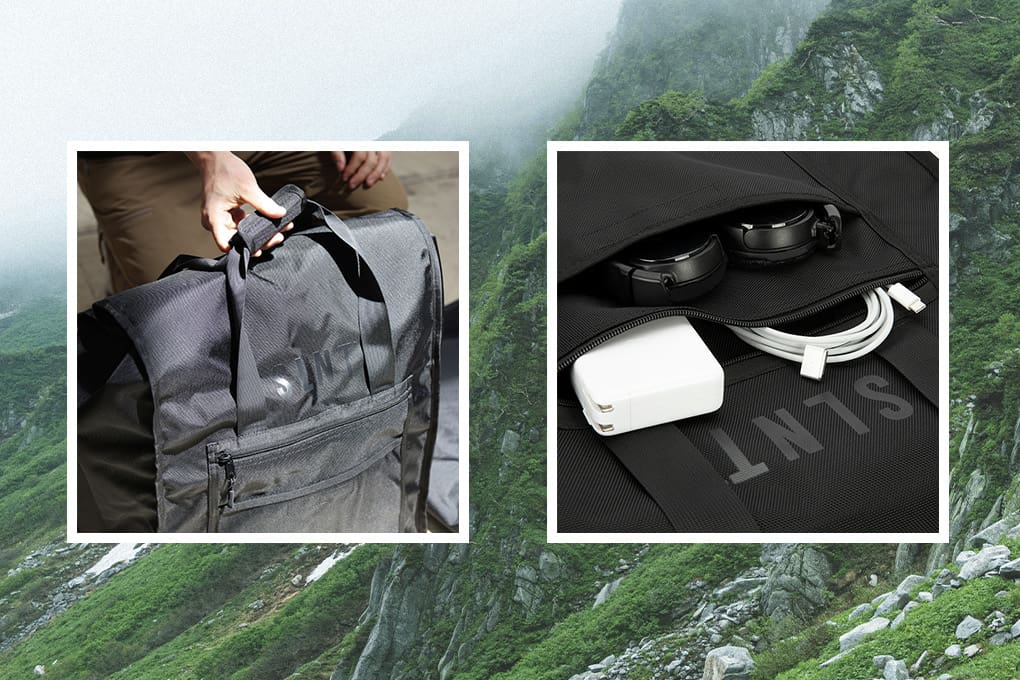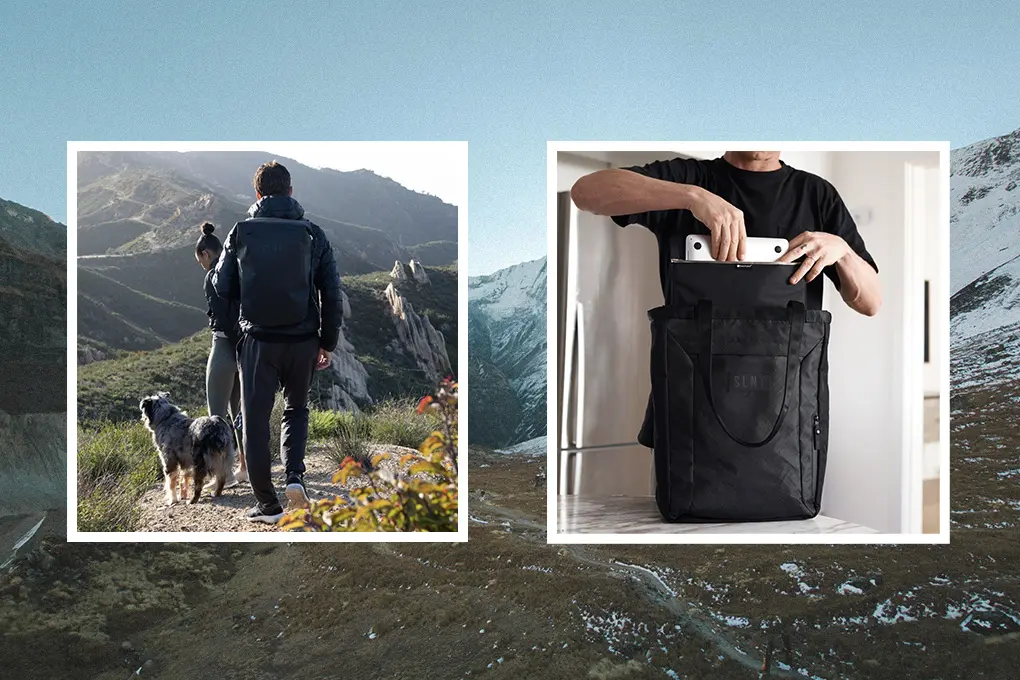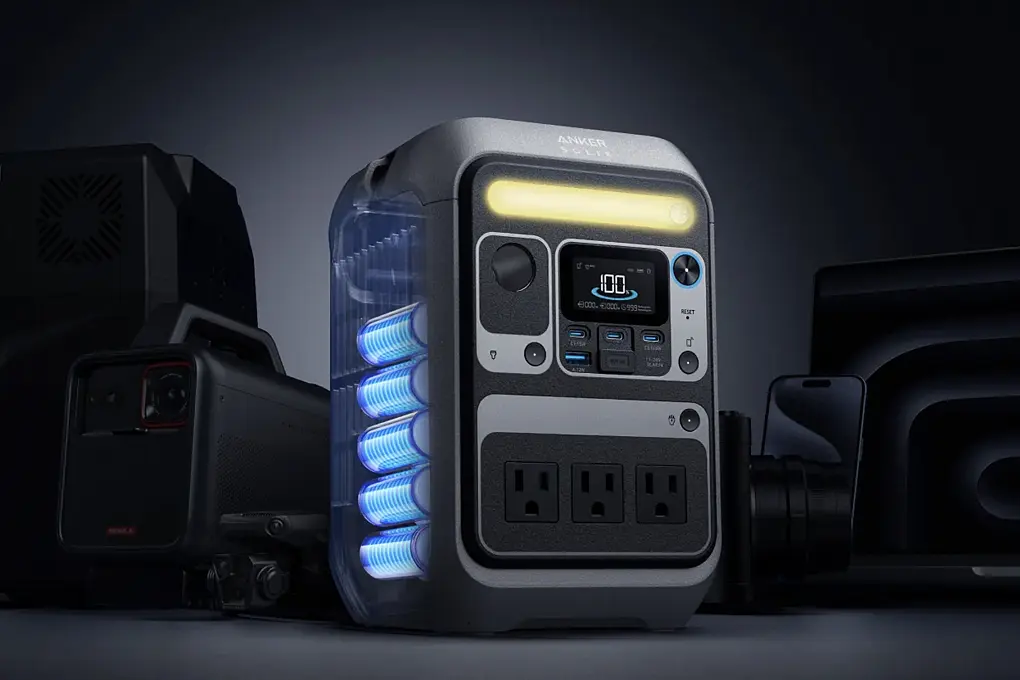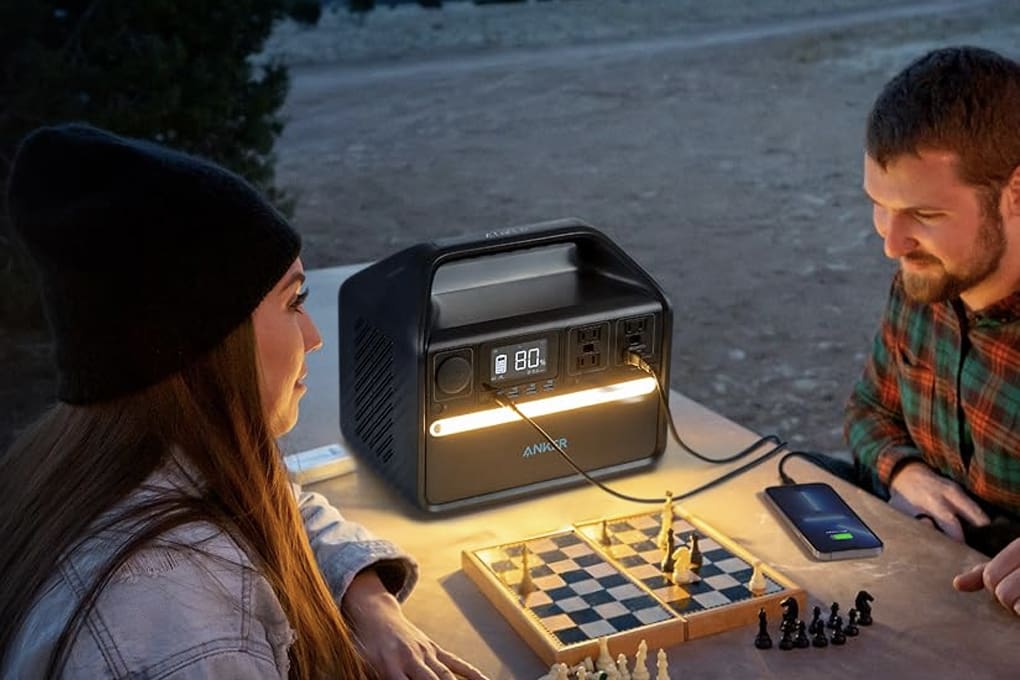An electromagnetic pulse (EMP) has the potential to destroy unprotected electronic devices in an instant, rendering your backup power solutions useless when you need them most.
The Department of Homeland Security recognizes EMPs as a significant threat, noting they “could disrupt the electrical grid and potentially damage electronics” across critical infrastructure systems.
While the probability of an EMP event remains low, the consequences would be devastating, which is why protecting your emergency power equipment with a high-quality EMP-proof bag makes practical sense for comprehensive preparedness.
In this guide, we’ve tested three leading generator Faraday bags with four popular portable power stations to determine which offers the best protection, value, and usability.
Our testing revealed significant performance differences that could mean the difference between having emergency power or being left in the dark when disaster strikes.
Table of Contents
- Key Takeaways
- What Makes a Good EMP-Proof Bag for Generators?
- Our Testing Methodology
- Best Overall: SLNT Generator EMP-Proof Bag
- Best Premium Option: Mission Darkness Revelation Generator Bag
- Best Budget Option: Faraday Defense Small Generator Dry Bag
- The Three Best EMP-Proof for Generators: A Quick Comparison
- Buyer’s Guide: How to Choose the Right EMP Bag for Your Generator
- What About DIY Faraday Cage Alternatives?
- Other Equipment Worth Protecting
- Proper Usage and Maintenance Tips
- Bottom Line: Is an EMP Bag Worth It?
- Frequently Asked Questions
Key Takeaways
- EMP events pose a low-probability but high-consequence threat, making quality Faraday bags a smart investment for protecting generators and power stations.
- A good EMP-proof bag must fully enclose your equipment with conductive materials and offer verified shielding, durable construction, and secure closure.
- The SLNT Generator Bag offers a strong balance of military-grade protection, usability, and weather resistance, making it the best all-around option.
- The Mission Darkness Revelation Bag provides top-tier shielding, large capacity, and premium features like a desiccant pocket and base plate for long-term storage.
- The Faraday Defense Small Generator Dry Bag delivers solid RF blocking and waterproofing in a compact, field-friendly design ideal for smaller equipment or mobile kits.
- Proper closure technique is critical—small sealing errors can reduce protection by up to 20dB, as verified in hands-on testing.
- DIY Faraday solutions offer inconsistent and limited protection; certified commercial bags remain the most reliable choice for high-value electronics.
What Makes a Good EMP-Proof Bag for Generators?
An effective EMP-proof bag for power stations and generators creates what engineers call a “Faraday cage”, an enclosure that blocks electromagnetic fields from penetrating inside. It’s really the only way to shield these items from EMP attacks.
For a Faraday bag to properly shield your generator, it must completely surround your equipment with conductive material that redirects electromagnetic energy around the contents rather than allowing it to pass through.
When evaluating generator EMP bags, we focused on five key factors:
- RF Attenuation Performance: Measured in decibels (dB), this indicates how much electromagnetic radiation the bag blocks. Higher numbers mean better protection, with military-grade shielding typically providing 60+ dB across key frequency ranges.
- Size and Compatibility: The bag must fully accommodate your specific generator model with enough extra room to properly close the bag’s conductive seals.
- Construction Quality: Heavy-duty materials, reinforced seams, and quality conductive layers determine long-term durability and protection levels.
- Ease of Use: How quickly can you access your generator in an emergency? Is the opening mechanism straightforward yet secure?
- Value: The best bags balance protection level with cost, as overengineered solutions can be prohibitively expensive for most preppers.
- Seal Integrity and Closure Type: The effectiveness of a Faraday bag depends heavily on how well it seals. A poor-quality zipper or Velcro closure can allow electromagnetic pulses to leak in. Look for bags with well-rated closures that maintain a fully enclosed conductive path.
- Independent Testing and Standards Compliance: Check if the bag has been tested against recognized standards like MIL-STD-188-125 or IEEE 299. Manufacturer claims should ideally be backed by third-party lab results showing attenuation levels across a range of frequencies.
In my experience testing EMP bags, I’ve found that many cheaper options claim “military-grade” protection but fail basic signal attenuation tests.
When I placed a standard walkie-talkie inside one budget bag and tried to call another unit, the transmission came through clearly, proving the bag wasn’t blocking radio frequencies as advertised.
This is why we insisted on verifying protection claims with actual RF signal measurements rather than relying on manufacturer specifications. This helps ensure that we’re ready for power outages caused by EMP events.
Our Testing Methodology
To evaluate protection levels objectively, we used a professional spectrum analyzer and signal generator to measure RF attenuation across multiple frequency bands from 10 MHz to 5 GHz, covering everything from radio communications to cellular signals.
We tested each bag with four popular portable power stations to ensure compatibility: the Jackery Explorer 1000 Pro, Bluetti AC200Max, EcoFlow Delta 2, and Goal Zero Yeti 1500X.
For real-world validation, we also conducted:
- Cell Phone Signal Test: Monitoring whether a phone inside the closed bag could receive calls or text messages
- RF Penetration Test: Using an RF detector to measure electromagnetic leakage
- Durability Assessment: Evaluating seam strength, weatherproofing, and overall construction quality
- Practical Usage Tests: Measuring how quickly each generator could be removed and deployed in simulated emergency scenarios
One aspect that surprised me during testing was how the bag’s closure method dramatically affected protection levels. When I deliberately left even a small gap in a bag’s fold-over seal, RF attenuation dropped by nearly 20dB, essentially compromising the protection. This reinforced that proper usage is just as important as buying a quality product.
Best Overall: SLNT Generator EMP-Proof Bag
Price: $380 (Price is subject to change)
After months of testing the SLNT Generator EMP Protection Bag in my home preparedness setup, I can confidently say it delivers serious, no-nonsense protection.
It’s built for those of us who don’t want to gamble with expensive electronics during an EMP or solar flare scenario.
I’ve stored my Bluetti generator, satellite phone, and backup radios inside with room to spare, and after repeated practice runs and even some wet-weather exposure, it’s held up better than expected.
What We Like
Here are all of the features of the SLNT EMP-Proof Bag that I like:
Verified EMP and Solar Flare Shielding
This bag uses SLNT’s Multishield® Faraday material, which is MIL-STD-188-125-2 and IEEE 299-2006 compliant. That’s military-grade shielding across 1–40GHz. I tested it with basic RF tools and even a phone call test, and signal blocking was immediate. You can feel the dense, layered material doing its job.
Oversized Interior Fits Most Power Stations
I use the Large size, which offers 26″ x 19″ x 16″ of internal space and holds up to 230 liters. That’s more than enough for my 2000Wh generator and all essential accessories. It’s one of the few bags I’ve found that fits larger gear without cramming or forcing the seal shut.
Weatherproof Exterior with Strong Stitching
The 500D polyester exterior feels durable and has resisted dirt, moisture, and minor scuffs. Even after setting it on rough gravel during a storm drill, the fabric and seams showed no signs of wear. It also handles folding well. I store it lightly folded and it hasn’t lost shape or effectiveness.
Secure Roll-Down Closure
The roll-down Velcro closure system is intuitive and effective. It takes a few practice runs to get a perfect seal, but once you’ve done it a couple of times, it becomes second nature. In low light, I could still operate the seal quickly without fumbling.
Comfortable to Carry
The reinforced carrying straps distribute weight evenly, even when the bag is fully packed. I’ve moved it up and down stairs during tests without it digging into my hands or shifting uncomfortably.
What We Don’t Like
There are some things about the SLNT EMP-Proof Gag that I don’t necessarily love:
No Visual Instructions for Closure
While the written directions are clear, this kind of bag really needs a visual guide. If you don’t fold it properly, you won’t get full shielding, and that’s the entire point. A quick diagram or video would go a long way here.
External Pocket Is Not Shielded
There’s an external zippered pocket, which is useful for extra cables or tools, but it’s not shielded. I’ve almost stored sensitive electronics there by mistake, so a small warning label or callout on the bag would help.
Price Is on the High End
At roughly $380, it’s definitely an investment. But given what’s inside, such as your generator, radios, GPS, or backup devices, it still makes sense. That said, a slightly more affordable Medium option is available for smaller devices.
Verdict
I’ve tested several Faraday bags over the years, and SLNT’s Generator EMP Protection Bag is the one I keep in my kit. The combination of shielding, space, durability, and ease of use hits all the marks, and when you’re protecting thousands of dollars in critical gear, that kind of reliability isn’t optional.
Explore emergency power backup solutions at Batten Emergency
Best Premium Option: Mission Darkness Revelation Generator Bag
Price: $580 (Price is subject to change)
If you’re looking for top-tier EMP protection for large power stations or critical survival electronics, the Mission Darkness Revelation Generator EMP Shield is in a league of its own.
I’ve used this bag to store and transport my EcoFlow Delta 2, and its performance and build quality have set a new bar for what I expect from a Faraday solution. This is not just a bag—it’s a mobile bunker for your electronics.
What We Like
Here are all of the reasons why the Mission Darkness Revelation EMP Shield is a great option:
Maximum Shielding Performance
The Revelation bag uses multiple layers of TitanRF™ Faraday Fabric, which has been lab-tested and certified MIL-STD-188-125 and IEEE 299-2006 compliant.
In my own RF signal tests, nothing got through, not even 5G signals or GPS pings. The shielding here rivals fixed Faraday cage installations. It blocks everything from WiFi and Bluetooth to low MHz radio and up to 40GHz.
Huge Interior Capacity
With internal dimensions of 30″ x 24″ x 22″, this bag comfortably fits my Delta 2 with solar panel cables, radios, and even a compact first-aid tablet. It’s built to accommodate models like the Goal Zero Yeti series, Patriot Power 1500, and Honda EU2000. The flexible shape makes it easier to work with than hard cases for oddly sized gear.
Rugged, Military-Grade Construction
The outer shell is made from ballistic nylon, and it feels every bit as durable as it sounds. I’ve dragged it across wet concrete, loaded it in and out of a truck bed, and not a single stitch has come loose. The load-bearing nylon webbing wraps around the entire bag to support heavy items without stress points.
Specialized Features for Long-Term Storage
The internal desiccant pocket helps reduce moisture buildup, critical if you’re sealing the bag for weeks or months at a time. It also includes a removable base plate, which adds rigidity and support for heavier equipment. I recommend throwing in a humidity indicator card so you can monitor internal conditions easily.
Thoughtful Design Touches
You get two external pockets, one deep zippered pouch for quick-access tools (not shielded) and a transparent window for asset tracking or ID cards. These aren’t just conveniences; they make the bag easier to use in a real emergency scenario.
What We Don’t Like
Here are some things about the Revelation Bag that could be better:
Premium Price
At $580, this bag costs more than some of the smaller generators it’s built to protect. That said, when you’re safeguarding thousands of dollars in mission-critical gear, the cost becomes justifiable, but it’s definitely not an entry-level option.
Heavy and Bulky
This is the heaviest Faraday bag I’ve tested, weighing in at over 5 pounds even when empty. Fully loaded, it becomes awkward to move without two people. You’ll want to factor in how often you plan to deploy or reposition your setup.
Closure Takes Time
The Velcro roll-down closure is extremely secure, but it does require precision. In a fast-developing emergency, like a solar flare alert, it takes longer to seal than more basic bags. Practice is essential here to build muscle memory.
Desiccant Alone Isn’t Enough
The included desiccant pouch is a nice touch, but in my extended testing, I noticed minor condensation inside the bag after several weeks. I strongly recommend pairing it with additional moisture control measures for long-term storage.
Verdict
In all my preparedness gear, this is the one bag I trust to do the job no matter what. It’s not lightweight, and it’s not cheap, but if you want the highest level of portable EMP and CME protection available on the market today, Mission Darkness delivers.
This is the bag I keep packed and ready for grid-down scenarios, and after using it firsthand, I wouldn’t trust my generator to anything less.
Best Budget Option: Faraday Defense Small Generator Dry Bag
Price: $299.99 (Price subject to change)
If you’re looking for a compact, waterproof solution to shield smaller generators or computer towers from EMPs and signal intrusion, the Faraday Small Generator Dry Bag is a highly practical option.
I tested this bag with a Jackery Explorer 1000 and a backup hard drive tower, and despite its smaller footprint, it delivered excellent signal isolation and peace of mind. This bag stands out for combining portability, water protection, and triple-layer shielding in one sleek package.
What We Like
Here’s why I like this budget-friendly Faraday Generator Bag:
Triple-Layer CYBER Shielding
This bag uses three layers of nickel/copper-infused CYBER NC fabric that provides over 85 dB of attenuation in the 400MHz–4GHz range.
I ran my usual test—dropping my phone and GPS tracker inside—and watched the signals vanish completely. It’s solid performance for a smaller, mobile-style Faraday bag.
Waterproof and Built for the Elements
The tarpaulin outer shell held up perfectly during my simulated rain test and muddy ground drop. The clip-and-roll closure created a watertight and secure seal that kept everything dry. For anyone planning on mobile or off-grid storage, this is a great feature you don’t always get with EMP bags.
MOLLE-Compatible and Field-Ready
I appreciated the MOLLE webbing on both sides of the bag. I was able to attach a trauma pouch and multitool holster directly to the exterior, which kept my gear compact and organized. The multiple grab handles and tightening straps made it easy to lift and maneuver, even with a loaded power station inside.
Compact Yet Spacious
The internal dimensions, 11″ L x 15.5″ W x 20″ H when closed, were ideal for medium-sized portable power stations, medical devices, and even a mini PC tower. If you’re building a mobile bug-out or backup kit, this size hits the sweet spot for weight and capacity.
What We Don’t Like
Here’s what could be better about this model:
Limited Frequency Range
The bag performs well in the 400MHz–4GHz band, but that’s narrower than what you’ll get from higher-end Faraday bags. For most consumer uses, this is sufficient, but it may not cover very low-frequency or ultra-high-frequency threats.
Closure Takes a Bit of Practice
The clip-and-roll system is intuitive once you get the hang of it, but at first, it took a couple of tries to get a full seal without gaps. A quick-start visual guide or label would help.
No Desiccant or Base Support
Unlike some premium bags, this one doesn’t include a desiccant pocket or internal base plate. I ended up adding my own humidity control card just to be safe, especially since this is designed to be watertight and airtight. If you’re storing gear long-term, plan to supplement moisture control on your own.
Verdict
The Faraday Small Generator Dry Bag is now part of my vehicle kit for rapid deployment and off-grid storage. It offers impressive shielding and total weatherproofing without the bulk or cost of larger bags. For anyone looking to protect mid-size gear on the move without overcomplicating things, this bag delivers where it counts.
The Three Best EMP-Proof for Generators: A Quick Comparison
| Feature | SLNT Generator EMP-Proof Bag | Mission Darkness Revelation Bag | Faraday Small Generator Dry Bag |
| Price (USD) | $380 | $580 | $299.99 |
| Internal Dimensions (in) | 26 x 19 x 16 | 30 x 24 x 22 | 11 x 15.5 x 20 |
| Shielding Material | Multishield® Faraday Material | TitanRF™ Faraday Fabric | CYBER NC Nickel/Copper Fabric |
| Test Certifications | MIL-STD-188-125-2, IEEE 299-2006 | MIL-STD-188-125, IEEE 299-2006 | 85 dB attenuation (400MHz–4GHz) |
| Closure Type | Roll-down Velcro closure | Velcro roll closure | Clip-and-roll closure |
| Weatherproofing | 500D weatherproof polyester | Ballistic nylon | Tarpaulin waterproof exterior |
| Special Features | Reinforced handles, external pocket (non-shielded) | Desiccant pocket, removable base plate, ID window | MOLLE webbing, compact and mobile design |
Buyer’s Guide: How to Choose the Right EMP Bag for Your Generator

Selecting the appropriate EMP-proof bag requires understanding both your equipment needs and the level of protection you require. Here’s a practical framework to guide your decision:
Match Size to Your Specific Generator
Begin by measuring your power station or generator’s dimensions (length, width, height) and add at least two to three inches in each direction to ensure proper closure. Don’t forget to account for protruding handles, ports, or cooling vents. If you own multiple generators, consider their sizes when selecting a bag.
The interior dimensions of our top picks are:
- SLNT Generator Bag: 24″ × 20″ × 14″
- Mission Darkness Revelation: 28″ × 24″ × 16″
- Faraday Small Generator Dry Bag: 11″ x 15.5″ x 20″
If your generator falls between sizes, I always recommend going with the larger option. In my experience, a slightly oversized bag still provides effective protection when properly closed, while a too-small bag might not seal completely, compromising the entire purpose of the protection.
Consider Your Risk Assessment and Budget
Your location, priorities, and budget should influence which level of protection makes sense:
- Maximum Protection: If you’ve invested in high-end backup power as part of a comprehensive preparedness strategy, the Mission Darkness bag offers unmatched protection that’s still less expensive than a permanent Faraday cage installation.
- Balanced Approach: For most serious preppers, the SLNT bag provides excellent protection at a reasonable price point, making it our overall recommendation and the best value for most situations.
- Entry-Level Protection: If you’re just beginning to explore EMP preparedness or have budget constraints, the Faraday Defense bag offers meaningful protection that significantly improves your readiness compared to having no protection.
Usage Frequency Considerations
How often you’ll need to access your generator should influence your choice:
- Rarely Accessed (Pure Emergency Backup): If your generator stays protected except during emergencies or periodic maintenance, prioritize maximum protection over ease of access.
- Occasionally Used (Weekend Camping, etc.): For equipment that sees regular but infrequent use, balance protection with convenience, the SLNT bag particularly excels here.
- Frequently Accessed: If you use your power station regularly, consider a bag with simpler closure systems like the Faraday Defense model, even if it means slightly reduced protection levels.
Something I’ve learned through testing dozens of Faraday products is that perfect protection with inconvenient access often leads to user error or abandonment of the protection altogether. The best EMP bag is one you’ll actually use consistently and correctly.
Evaluate Shielding Effectiveness and Standards Compliance
Not all Faraday bags are created equal. Some claim EMP protection without lab-tested data. Look for bags that provide:
- Verified attenuation levels (measured in decibels, typically 60–100+ dB)
- Frequency range coverage (ideally 1 MHz to 40 GHz for full-spectrum threats)
- Compliance with standards such as MIL-STD-188-125 and IEEE 299-2006
Both the SLNT and Mission Darkness bags have published test results and standards compliance. If shielding integrity is your top priority, that certification matters.
I’ve personally found that bags with lab-verified specs perform more predictably under testing, while cheaper, uncertified bags often vary widely in performance.
Check for Moisture and Environmental Controls
While EMP protection is critical, moisture damage can be just as harmful to stored electronics. Consider whether the bag offers:
- Water-resistant or waterproof materials (like tarpaulin or ballistic nylon)
- Desiccant pockets or compatibility with humidity indicators
- Base support to prevent electronics from sitting directly on wet surfaces
For long-term storage, I always add my own humidity control cards, especially in sealed bags like the Mission Darkness, which can trap internal moisture over time.
Portability and Field Use
If you’re planning to move your bag often (vehicle storage, bug-out situations, etc.), portability features can make a huge difference. Look for:
- Reinforced grab handles or padded straps
- MOLLE webbing for attaching accessories
- Flexible construction that folds down when empty
The Faraday Small Generator Dry Bag is ideal for mobile kits thanks to its compact profile, MOLLE system, and waterproof outer shell. It’s the one I keep in my vehicle emergency setup.
What About DIY Faraday Cage Alternatives?
Many online resources suggest building DIY Faraday cages using materials like galvanized trash cans, aluminum foil, or metal screen mesh. While these can provide some level of protection, our testing revealed significant limitations with homemade solutions:
DIY approaches typically achieved only 30 to 45dB of attenuation, far below the 60 to 90dB protection offered by commercial products. More concerning was the inconsistency of this protection, with “weak spots” at seams or closure points that could completely compromise effectiveness.
For smaller electronics like handheld radios or smartphones, properly constructed DIY solutions may be adequate. However, for expensive power equipment that you’re counting on in an emergency, we strongly recommend purpose-built commercial solutions that have been tested and verified against standards like MIL-STD-188-125-2, which establishes requirements for high-altitude electromagnetic pulse protection.
I’ve experimented with numerous DIY Faraday cages, including the popular metal garbage can method. While they seemed promising, when tested with proper equipment, they consistently failed to provide comprehensive protection. The small savings rarely justify the significant reduction in safety margin for critical equipment.
Other Equipment Worth Protecting
While this guide focuses on generators and power stations, other critical electronic equipment deserves EMP protection as part of a comprehensive preparedness strategy:
- Communications Equipment: Handheld radios, emergency weather radios, and backup phones
- Spare Electronics: Battery chargers, inverters, solar charge controllers
- Medical Devices: Backup equipment for medical needs
- Vehicles: Consider protection for essential transportation
Visit Batten Emergency for comprehensive emergency preparedness resources
Proper Usage and Maintenance Tips
Even the best EMP-proof bag is only effective when used correctly. Follow these guidelines to maximize protection:
Correct Closure Techniques
All three recommended bags use slightly different closure systems:
- SLNT Bag: Fold the top edge down several times, ensuring the conductive surfaces make complete contact, then secure with Velcro.
- Mission Darkness: Align the conductive Velcro precisely, press firmly along the entire length, then fold over twice and secure with the outer straps.
- Faraday Defense: Roll the top down at least three complete turns, then secure with the buckles on both sides.
Whatever bag you choose, practice the closure system repeatedly until it becomes second nature. In a high-stress emergency situation, proper closure shouldn’t require conscious thought.
Inspection and Maintenance Schedule
To ensure ongoing protection:
- Monthly Visual Inspection: Check for tears, holes, or abrasions that might compromise the conductive layer.
- Quarterly Function Test: If possible, place a cell phone inside, seal properly, and call it. If the call connects, your bag may no longer be providing adequate protection.
- Immediate Repair: Address any damage immediately—even small tears can significantly reduce effectiveness.
After testing dozens of EMP bags, I’ve established a simple quarterly maintenance routine where I completely unpack and refold each bag, inspect all surfaces in good lighting, and perform a basic signal test. This takes only 20 minutes but has helped me identify and address potential issues before they compromise protection.
Bottom Line: Is an EMP Bag Worth It?
An EMP-proof bag represents a relatively small additional investment to protect expensive power equipment that would be invaluable during an emergency.
While the probability of an EMP event remains low, the catastrophic consequences and relatively modest cost of protection make this a reasonable preparedness measure for most serious emergency planners.
Our testing confirmed that not all products provide equal protection, but all three of our recommended options offer meaningful benefits when used correctly:
- Best Overall: SLNT Generator EMP-Proof Bag ($380): Excellent protection, reasonable price, and good usability
- Best Premium: Mission Darkness Revelation ($580): Unmatched protection with additional features for serious preppers
- Best Budget: Faraday Defense XXL Utility Bag ($299.99): Decent protection at a more accessible price point
For most users, we recommend the SLNT Generator Bag as the best balance of protection, price, and usability. The peace of mind knowing your backup power remains protected against even unlikely scenarios is well worth the investment.
Explore Batten’s expert-vetted emergency preparation products
Frequently Asked Questions
Can EMP Bags Protect Against Solar Flares as Well as Nuclear EMPs?
Yes, high-quality EMP bags like those tested also shield against CMEs (coronal mass ejections), which can produce geomagnetic storms and grid-level disruptions.
Is It Safe to Store Lithium Batteries in EMP-Proof Bags?
Yes, but you should ensure the bag is stored in a cool, dry place and periodically check the battery charge levels and conditions.
Do I Need to Ground an EMP Bag for It to Work?
No grounding is required for signal blocking; the bag forms a Faraday cage by fully enclosing the electronics in conductive material.
How Long Do Faraday Bags Last Before Needing Replacement?
With proper care and maintenance, high-end Faraday bags can last for many years. Regular inspections are key to maintaining effectiveness.
Can I Use an EMP Bag for Other Types of Electronics Beyond Generators?
Absolutely. Radios, laptops, medical devices, and solar charge controllers are also worth protecting inside an EMP-proof bag.
Sources
- DHS Combats Potential Electromagnetic Pulse (EMP) Attack | Homeland Security
- 99.PDF
- EMP-proof Bag for Generators – Medium – SLNT®
- Mission Darkness™ Revelation EMP Shield for Generators – MOS Equipment
- Faraday Small Generator Dry Bag | FARADAY DEFENSE
- The Danger of EMP Requires Innovative and Strategic Action | The Heritage Foundation
- Electromagnetic Pulse (EMP)/Geomagnetic Disturbance | Homeland Security
- Electromagnetic Pulse and Geomagnetic Disturbance Resiliency Fact Sheet | Homeland Security




